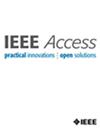Monitoring 5G Backhaul: An In-Band Telemetry Approach for Quality of Service
IF 3.4
3区 计算机科学
Q2 COMPUTER SCIENCE, INFORMATION SYSTEMS
引用次数: 0
Abstract
The use of Ultra-Dense Networks within 5G communications can be leveraged by the adoption of Millimeter-Wave (mmWave) technology for the backhaul, resulting in cost reductions and faster deployment of the infrastructure. However, this shift also introduces new concerns and restrictions. The wireless link susceptibility to signal strength and link loss degradation, due to loss of line-of-sight, makes the link quality inconsistent. The heterogeneity of network nodes poses an additional challenge for tracking link quality changes reliably. An effective network monitoring system using 5G Quality of Service (QoS) Indicators is necessary to correctly characterize and track channel and flow quality conditions in a 5G wireless backhaul. To tackle these challenges, we introduce an In-Band Telemetry (INT) approach, consisting of a P4-compatible dataplane model and an aggregation agent capable of gathering and processing per-packet measurements, exposing them as link and QoS flow quality metrics, suitable for integration with Software Defined Network (SDN) environments and 5G networks. Our study compares the accuracy achieved by the proposed in-band solution to a commercial network management system, in an outdoor test-bed with an obstructed mmWave backhaul link. The results demonstrate that this approach exhibits minimal measurement errors when assessing the throughput, latency, and Packet Error Rate (PER) of mmWave links. The solution attains an average forwarding overhead of approximately 17%, while maintaining a per-node aggregation processing total time upper-bound of 45 ms at 2.5 Gbps line rate.监控5G回程:一种服务质量的带内遥测方法
通过采用毫米波(mmWave)技术进行回程,可以利用5G通信中超密集网络的使用,从而降低成本并加快基础设施的部署。然而,这种转变也带来了新的担忧和限制。无线链路对信号强度的敏感性和由于失去视距导致的链路损耗退化,使得链路质量不稳定。网络节点的异构性给可靠地跟踪链路质量变化带来了额外的挑战。利用5G服务质量(QoS)指标的有效网络监控系统是正确表征和跟踪5G无线回程中信道和流量质量状况的必要条件。为了应对这些挑战,我们引入了一种带内遥测(INT)方法,该方法由一个兼容p4的数据平面模型和一个能够收集和处理每个数据包测量的聚合代理组成,将它们暴露为链路和QoS流质量指标,适合与软件定义网络(SDN)环境和5G网络集成。我们的研究比较了所提出的带内解决方案与商业网络管理系统在室外试验台中具有受阻毫米波回程链路所达到的精度。结果表明,该方法在评估毫米波链路的吞吐量、延迟和包错误率(PER)时显示最小的测量误差。该解决方案实现了大约17%的平均转发开销,同时在2.5 Gbps的线路速率下保持每个节点聚合处理总时间上限为45毫秒。
本文章由计算机程序翻译,如有差异,请以英文原文为准。
求助全文
约1分钟内获得全文
求助全文
来源期刊

IEEE Access
COMPUTER SCIENCE, INFORMATION SYSTEMSENGIN-ENGINEERING, ELECTRICAL & ELECTRONIC
CiteScore
9.80
自引率
7.70%
发文量
6673
审稿时长
6 weeks
期刊介绍:
IEEE Access® is a multidisciplinary, open access (OA), applications-oriented, all-electronic archival journal that continuously presents the results of original research or development across all of IEEE''s fields of interest.
IEEE Access will publish articles that are of high interest to readers, original, technically correct, and clearly presented. Supported by author publication charges (APC), its hallmarks are a rapid peer review and publication process with open access to all readers. Unlike IEEE''s traditional Transactions or Journals, reviews are "binary", in that reviewers will either Accept or Reject an article in the form it is submitted in order to achieve rapid turnaround. Especially encouraged are submissions on:
Multidisciplinary topics, or applications-oriented articles and negative results that do not fit within the scope of IEEE''s traditional journals.
Practical articles discussing new experiments or measurement techniques, interesting solutions to engineering.
Development of new or improved fabrication or manufacturing techniques.
Reviews or survey articles of new or evolving fields oriented to assist others in understanding the new area.
 求助内容:
求助内容: 应助结果提醒方式:
应助结果提醒方式:


